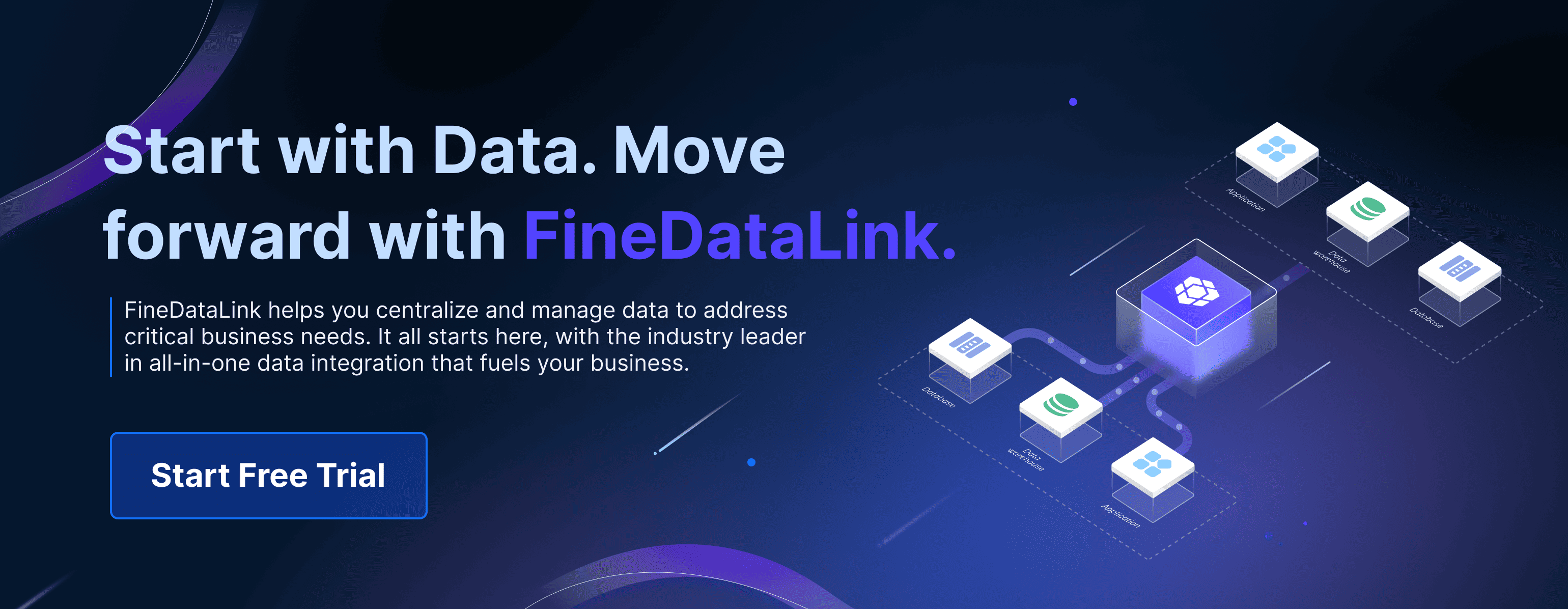Data integration combines data from different sources to provide a unified view, essential for modern businesses. Here are 6 best data integration platforms to use:
- FineDataLink
- Zigiwave
- Tray.io
- Pentaho
- SAP Data Services
- Oracle Data Integrator
With 84% of businesses recognizing integrations as crucial, the market value for data integration solutions is projected to reach $30.8 billion by 2027. This consolidation enhances data quality and improves decision-making and operational efficiency. Embracing the best data integration platforms in 2025 is paramount for organizations aiming to streamline processes and drive success.
Categories of Data Integration Platforms
Data integration platforms play a critical role in unifying, cleansing, and transforming data from various sources for enterprises to analyze and utilize effectively. Below are the primary categories of data integration platforms and their characteristics:
Cloud-Based Data Integration Platforms
Cloud-based data integration platforms offer a flexible and scalable solution for organizations seeking seamless data management. Talend Cloud stands out in this category, providing cloud-native data integration with support for hybrid environments. This platform enables efficient data processing and integration across various systems, ensuring smooth operations and enhanced decision-making.
Key Benefits
- Scalability: Easily scale resources based on business needs.
- Flexibility: Adapt to changing data requirements effortlessly.
- Cost-Effective: Reduce infrastructure costs with cloud-based solutions.
Key Players
Talend Cloud

Website: https://www.talend.com/
The Talend Cloud Data Integration platform seamlessly integrates cloud-based and on-premise data through user-friendly, flexible tools designed for both technical and non-technical users. Its graphical interface, robust component library, and prebuilt templates make it easy for everyone in your organization to access the data their business units require.
The platform supports data transformation and ensures data quality throughout the process, preventing the waste of time and resources on bad data. You can set up data pipelines to run in Spark and other applications as needed, and easily create a data inventory to transfer data into data warehouses.
Additionally, the Cloud Data Integration platform can be expanded with other Talend Cloud applications, providing enhanced data management and quality functionalities within the same software suite.
Boomi platform
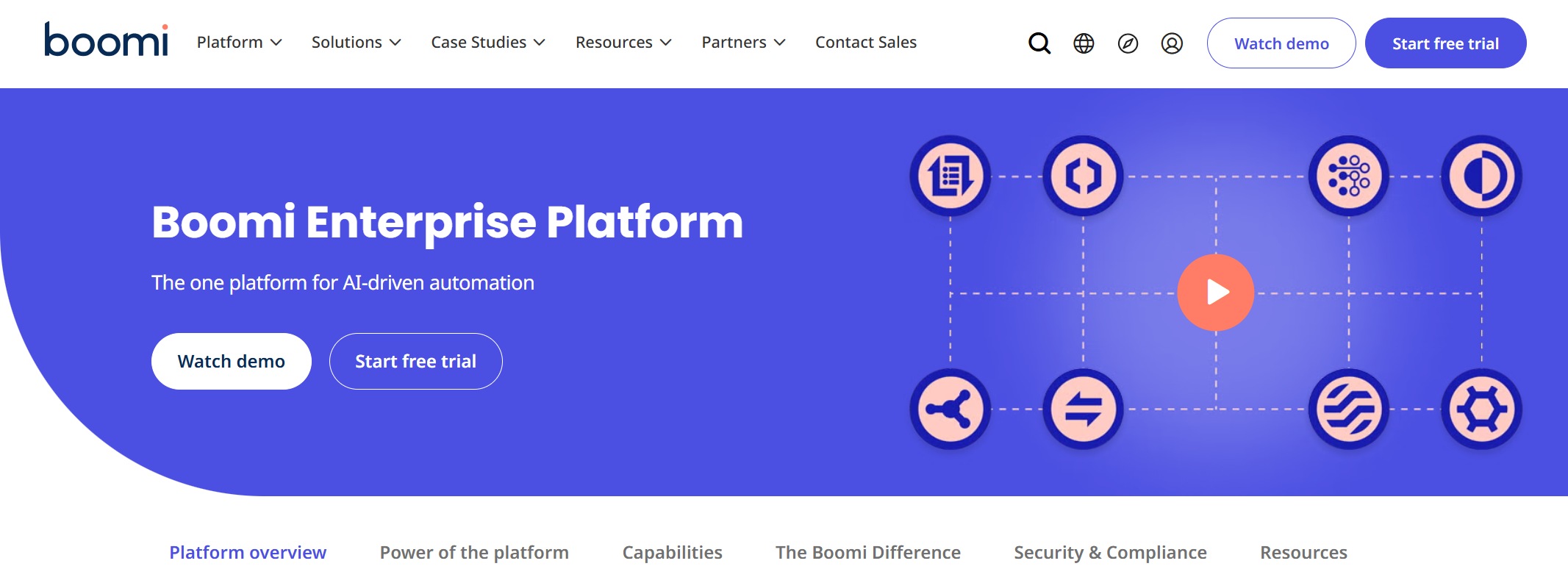
Website: https://boomi.com/platform/
Dell Boomi is a cloud-native data integration platform designed to streamline integration within complex hybrid cloud ecosystems and eliminate organizational siloes. Its user-friendly interface, enhanced by intelligent recommendations, delivers a comprehensive end-to-end data integration experience. By quickly integrating your data and applications, Dell Boomi significantly boosts business agility, enabling swift responses to market changes and innovations.
With Dell Boomi, you can enhance data quality, transform data, and modernize legacy applications. The platform includes 1,500 built-in endpoint connections to automate many common integrations, reducing the need for customized connections. Additional features include API management, data discovery, and data quality governance.
Informatica
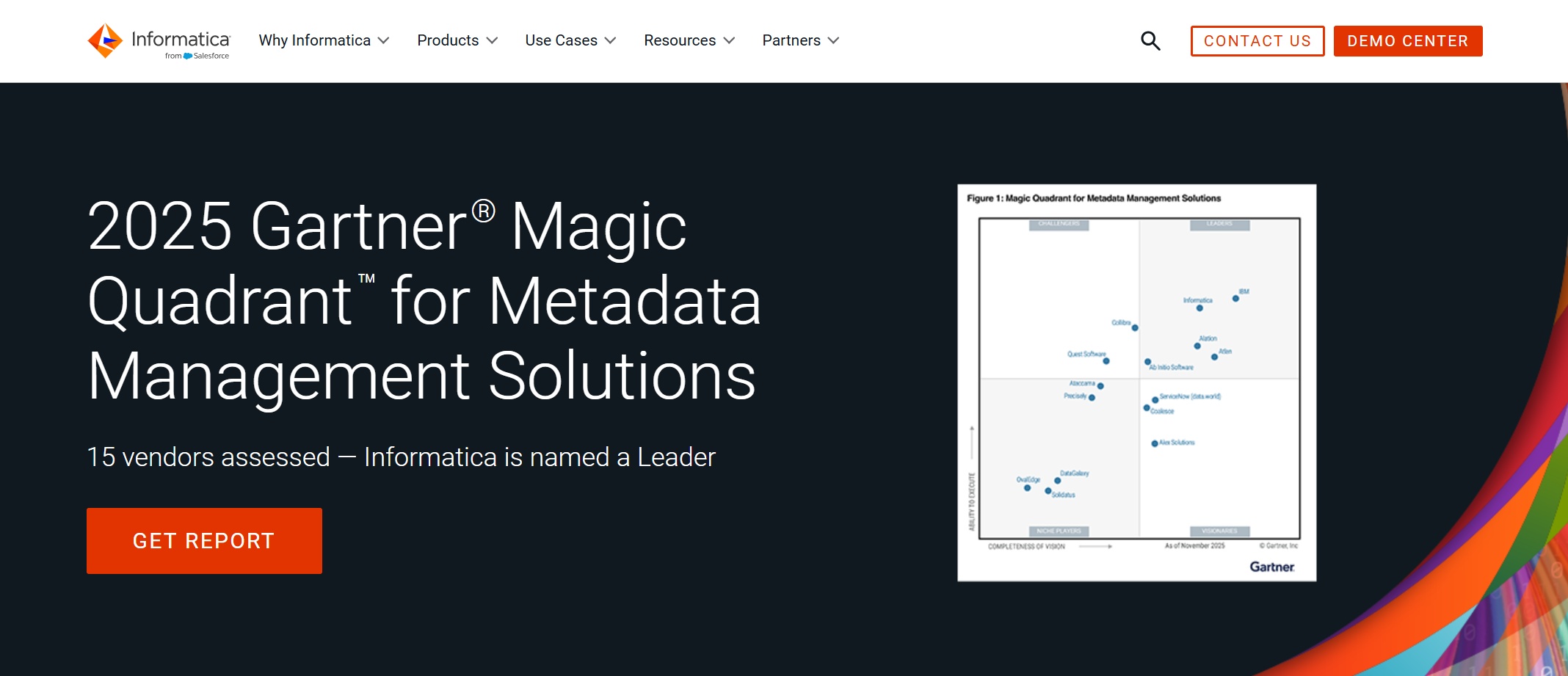
Website: https://www.informatica.com/
Informatica PowerCenter offers a comprehensive suite of tools and functionalities for extracting, transforming, and loading (ETL) data from various sources into target systems, such as data warehouses. Renowned for its scalability and robustness, PowerCenter is adept at managing complex data integration requirements.
Informatica PowerCenter is a cross-vertical solution designed to support organizations handling user data, with a particular emphasis on sectors like healthcare, financial services, and government.
On-Premises Data Integration Platforms
For businesses preferring on-premises solutions, on-premises data integration platforms offer robust features and control over data management processes. These platforms ensure data security and compliance while maintaining high-performance levels. Organizations can rely on these platforms for efficient data processing within their internal networks.
Key Benefits
- Enhanced Security: Keep sensitive data within internal servers.
- Customization: Tailor integration processes to specific business requirements.
- Compliance: Meet industry regulations with on-premises solutions.
Key Players
1.FineDataLink

Website: https://www.fanruan.com/en/finedatalink
FineDataLink is a modern and scalable data integration solution designed to address the challenges of data integration, data quality, and data analytics. It offers three core functions: real-time data synchronization, ETL/ELT, and APIs.
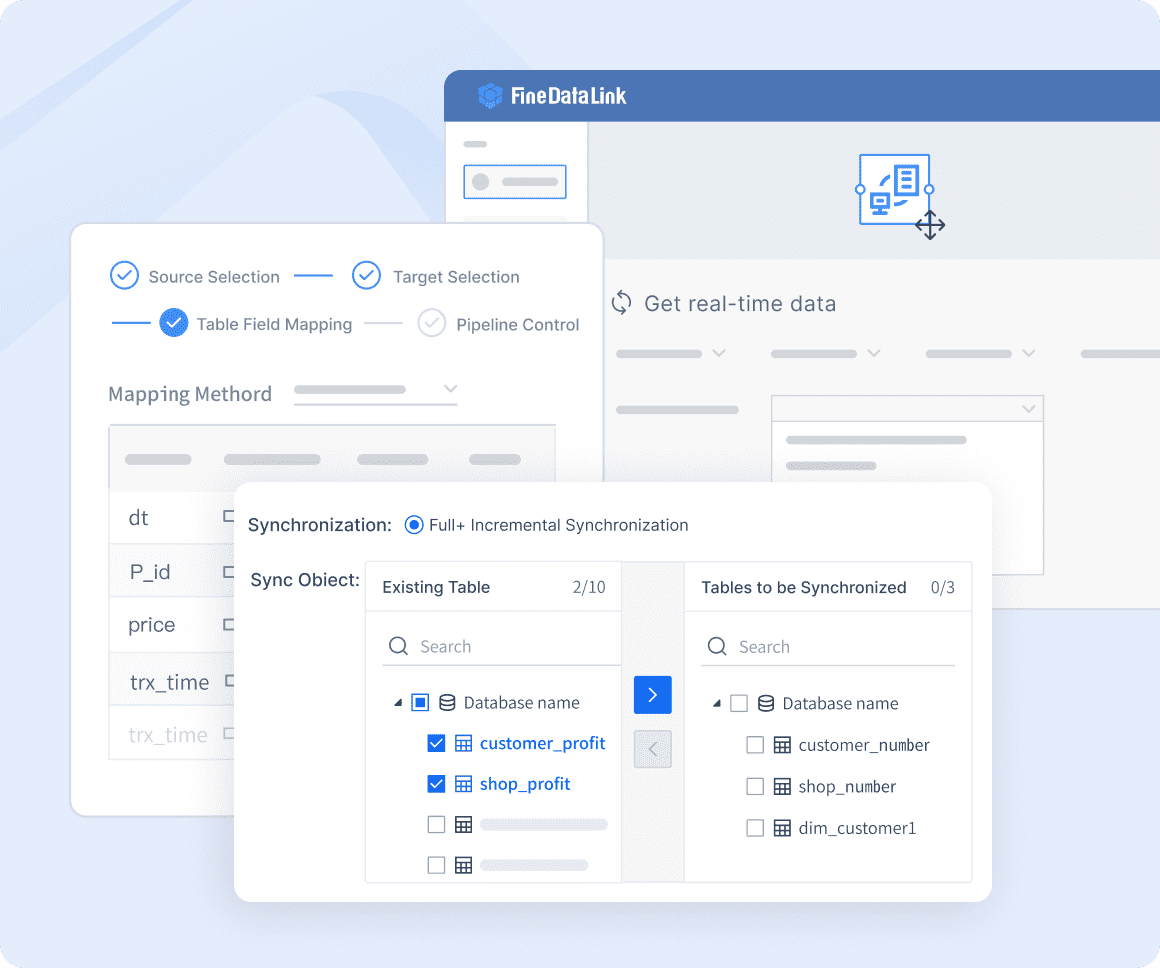
Developed by FanRuan, FineDataLink effectively manages data silos by integrating data from diverse sources, handling complex formats such as CSV, XML, JSON, databases, and proprietary systems. It automates traditionally manual and time-consuming ETL processes, ensuring scalability and optimal performance even with large data volumes. The platform facilitates real-time or near-real-time data synchronization across multiple systems and overcomes connectivity limitations with various data sources, including legacy and on-premises systems.
Key features include the ability to synchronize data across multiple tables with minimal latency, making it ideal for database migration, backup, and building real-time data warehouses. Additionally, FineDataLink supports data preprocessing and serves as an ETL tool, with the capability to develop and launch an API interface in just five minutes without writing code, enabling seamless data sharing between different systems, especially SaaS applications.

2.IBM InfoSphere Information Server
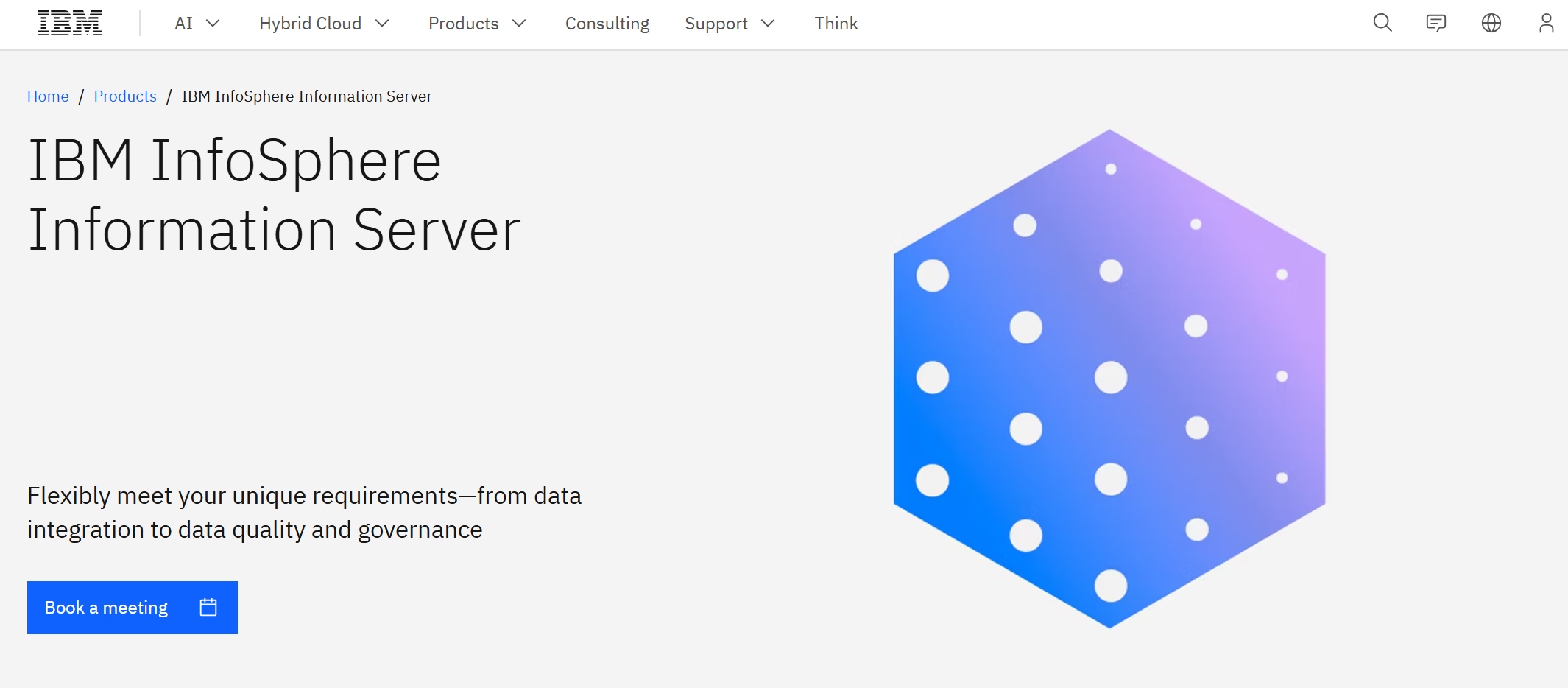
Website: https://www.ibm.com/products/information-server
IBM offers a range of data integration tools, including IBM App Connect, a cloud-based integration platform, and InfoSphere DataStage, an on-premises ETL tool. Both solutions provide robust capabilities for connecting applications, systems, and data sources, catering to large enterprises with diverse integration needs, whether they require cloud-based or on-premises data integration.
3.Oracle Data Integrator

Website: https://www.ibm.com/products/information-server
Oracle Data Integrator (ODI) is an ETL tool and data integration platform specifically designed for Oracle databases and applications. It offers robust features for data transformation, data loading, and data quality. ODI is tailored for medium to large enterprises across various industries that need a powerful and scalable data integration solution.
Hybrid Data Integration Platforms
Hybrid data integration platforms combine the benefits of both cloud-based and on-premises solutions, offering a versatile approach to data management. With the ability to integrate diverse systems seamlessly, these platforms are ideal for organizations with hybrid IT infrastructures. They provide a unified view of data across cloud and on-premises environments.
Key Benefits
- Seamless Integration: Connect cloud and on-premises applications effortlessly.
- Versatility: Adapt to changing business needs with hybrid capabilities.
- Real-Time Data Access: Ensure up-to-date information across all systems.
Key Players
1.MuleSoft Anypoint Platform
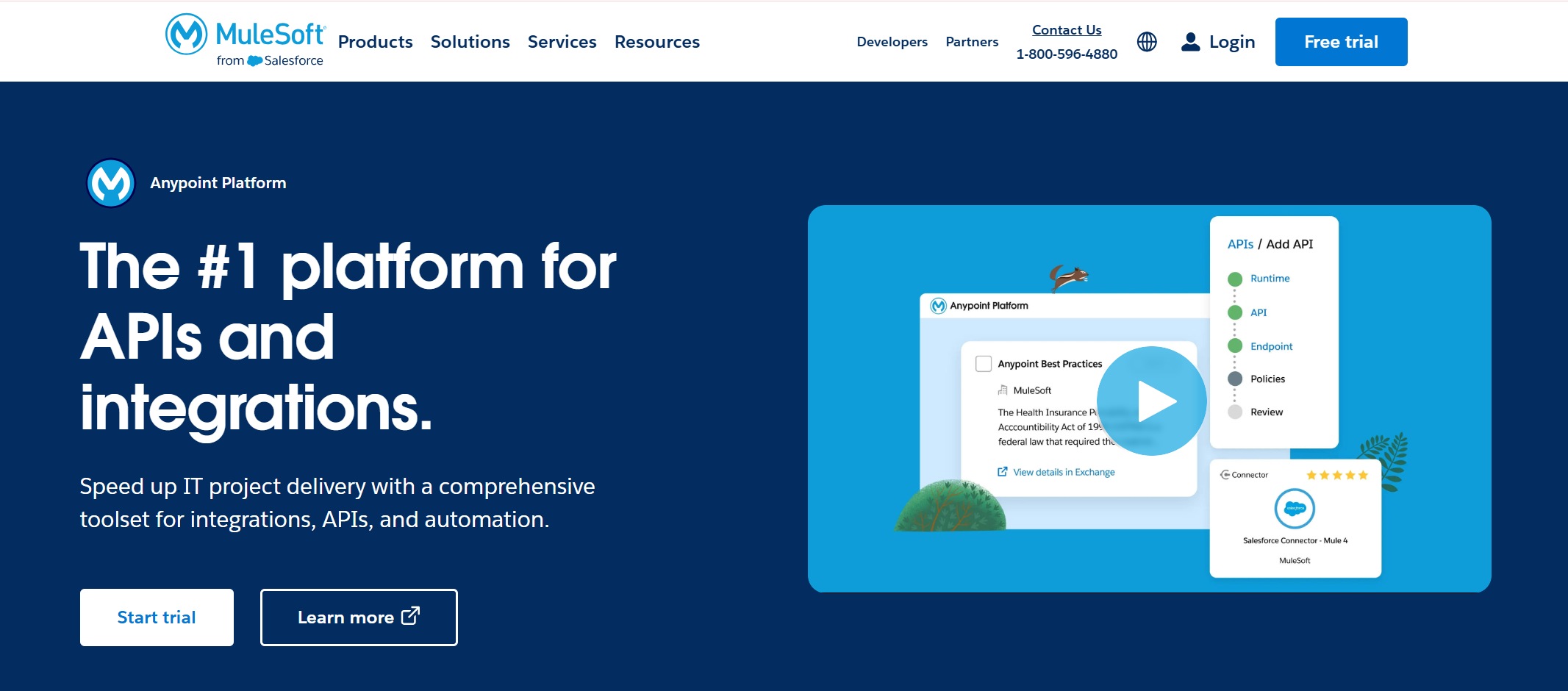
Website: https://www.anypoint.mulesoft.com/login/
MuleSoft Anypoint Platform is a hybrid integration platform offering a comprehensive suite of features encompassing iPaaS, API management, and ESB technologies. Designed for technical users in enterprise organizations, this all-in-one solution enables the creation of integrated application networks both on-premises and in the cloud. It emphasizes API connectivity to streamline these processes and employs a lightweight, scalable runtime engine for versatile hybrid deployment options.
2.SnapLogic

Website: https://www.snaplogic.com/
SnapLogic Intelligent Integration Platform is a data integration tool that focuses on robust and flexible self-service functionality. It’s designed to help organizations achieve their digital transformation goals by connecting data from everywhere. One standout feature is its integration capability with Internet of Things devices, which can deliver various types of useful information.
The platform boasts an extensive feature set including streamlined design of multi-point, enterprise-wide integrations, automated business processes and workflows, data pipeline and integration orchestration, support for low-code integration, 500 pre-built connectors, and AI-powered integration recommendations.
Emerging Data Integration Platforms
Overview of Emerging Platforms
In the realm of data integration, emerging platforms are revolutionizing how businesses manage and utilize their data. These platforms, backed by cutting-edge technology and innovative approaches, offer advanced solutions to address the evolving needs of modern organizations.
Key Players
1. FineDataLink: As a modern and scalable data integration solution, FinedataLink addresses the challenges of data integration, data quality, and data analytics through 3 core functions real-time data synchronization, ETL/ELT, and APIs.

2.Zigiwave: Zigiwave is a dynamic data integration and middleware platform that facilitates seamless connectivity between enterprise applications, databases, and systems. Its agile architecture enables swift data exchange and synchronization, empowering businesses to operate with efficiency and agility.
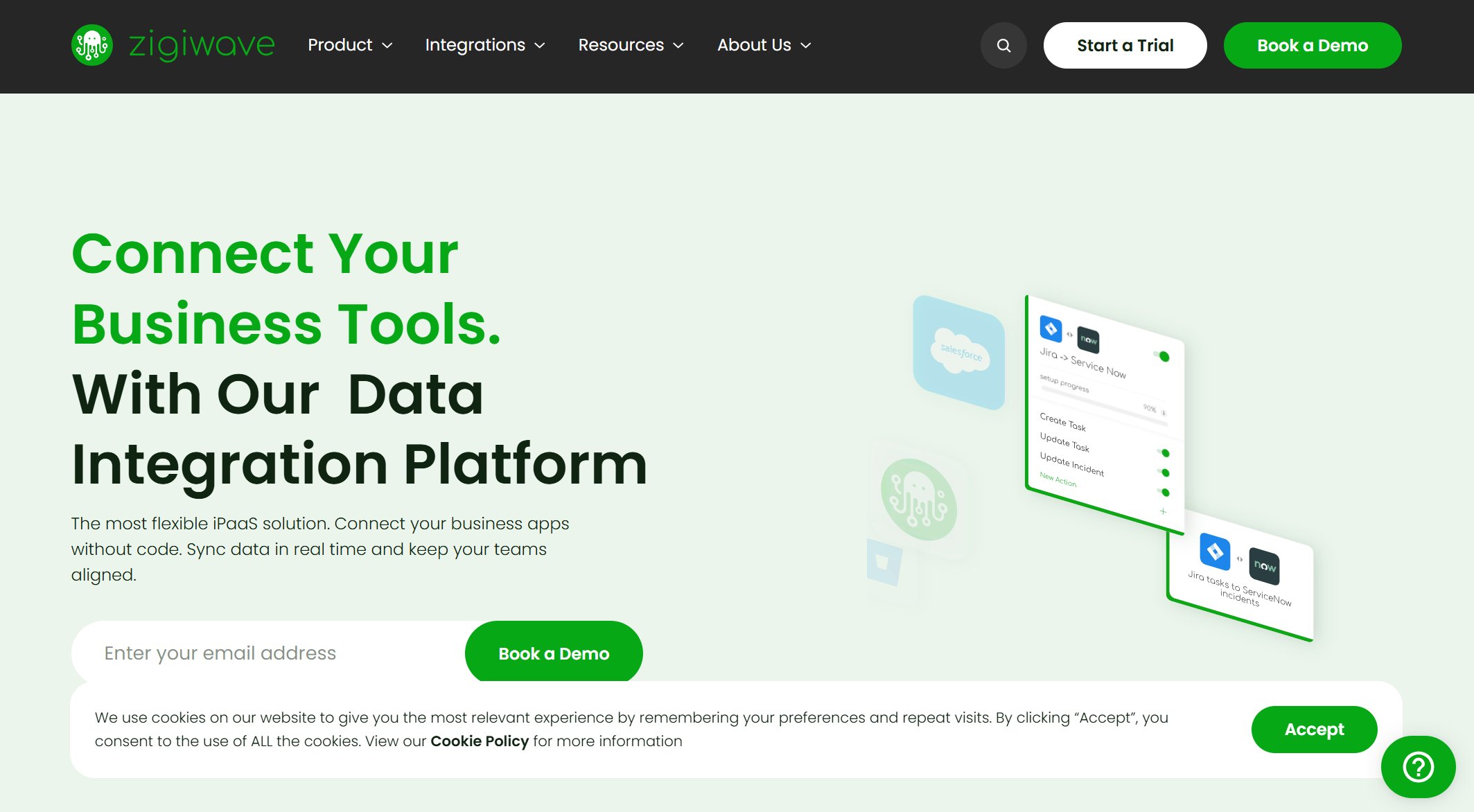
Website: https://www.zigiwave.com/
3.Tray.io: Tray.io emerges as a versatile data integration platform that simplifies complex workflows through automation. By streamlining data processes and enabling seamless communication between various applications, Tray.io enhances operational productivity and accelerates decision-making processes.

Website: https://tray.ai/
4.Pentaho: Pentaho stands out as a comprehensive data integration tool that offers robust features for extracting, transforming, and loading (ETL) data. With its user-friendly interface and powerful capabilities, Pentaho empowers organizations to optimize their data management strategies effectively.

Website: https://pentaho.com/
5.SAP Data Services: SAP Data Services is a leading platform known for its exceptional data quality management and integration capabilities. By ensuring data accuracy, consistency, and reliability across systems, SAP Data Services plays a vital role in enhancing decision-making processes within enterprises.
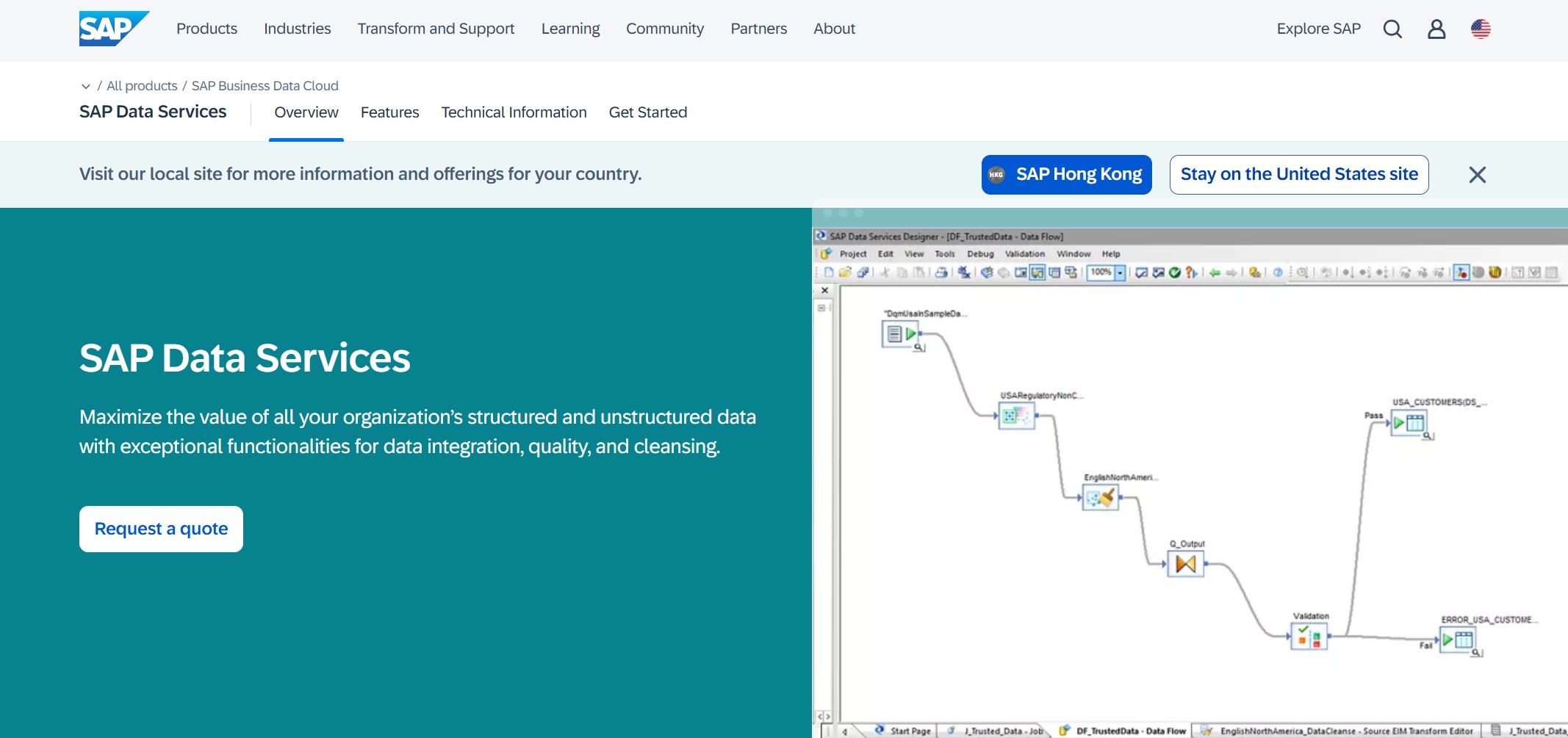
Website: https://www.sap.com/products/data-cloud/data-services.html
6.Oracle Data Integrator: Oracle Data Integrator is a trusted name in the realm of data integration platforms, renowned for its seamless connectivity and real-time data processing capabilities. With its focus on performance optimization and scalability, Oracle Data Integrator caters to the diverse needs of businesses operating in dynamic environments.

Website: https://www.oracle.com/apac/middleware/technologies/data-integrator.html
These key players exemplify the innovation and diversity present in the landscape of emerging data integration platforms. As organizations continue to prioritize efficient data management practices, these platforms offer valuable solutions to drive success in an increasingly digital world.
Key Features to Look for in Data Integration Platforms
Scalability
Maintaining scalability is crucial when selecting a data integration platform. To ensure seamless growth and adaptability, organizations should prioritize platforms that offer flexible resource allocation based on evolving business demands.
Key Considerations:
- Resource Allocation: Ability to allocate resources dynamically.
- Performance Optimization: Ensuring consistent performance under varying workloads.
- Expansion Capabilities: Facilitating easy expansion as data needs increase.
Ease of Use
The ease of use of a data integration platform significantly impacts operational efficiency and user productivity. Opting for platforms with intuitive interfaces and streamlined workflows can simplify data management processes and reduce the learning curve for users.
Key Factors to Evaluate:
- User Interface: Intuitive design for effortless navigation.
- Workflow Automation: Streamlining processes through automation features.
- Integration Flexibility: Supporting various data formats and sources seamlessly.
Security
Security is paramount in data integration to safeguard sensitive information and maintain regulatory compliance. Prioritizing platforms with robust security measures, encryption protocols, and access controls is essential to mitigate risks associated with data breaches.
Key Security Features:
- Data Encryption: Securing data both at rest and in transit.
- Access Controls: Managing user permissions effectively.
- Compliance Standards: Adhering to industry regulations for data protection.
Expert advice:
"Ensuring scalability, ease of use, and robust security features are fundamental aspects to consider when evaluating data integration platforms."
Compatibility with Existing Systems
Maintaining compatibility with existing systems is a critical consideration when selecting a data integration platform. Seamless integration with current infrastructure ensures smooth data flow and minimizes disruptions to ongoing operations.
Key Factors to Evaluate:
- System Requirements: Ensure the platform aligns with existing hardware and software specifications.
- Data Formats: Support for various data formats used within the organization.
- API Integration: Ability to integrate with existing APIs for efficient data exchange.
- Legacy System Support: Compatibility with legacy systems to facilitate data migration and consolidation.
Expert advice:
"Ensuring compatibility with existing systems is paramount to guarantee a seamless transition and optimal performance of the data integration platform."
How to Choose the Right Data Integration Platforms
Assessing Business Needs
- Evaluate your organization's data integration requirements based on operational workflows and data sources.
- Consider the scalability and flexibility needed to accommodate future growth and changing business demands.
- Identify key performance indicators (KPIs) that align with your data integration goals for enhanced decision-making.
Budget Considerations
- Determine a budget allocation for data integration platforms, considering both initial investment and long-term maintenance costs.
- Explore cost-effective solutions that offer essential features without compromising quality or performance.
- Analyze the return on investment (ROI) potential of each platform to ensure optimal utilization of financial resources.
Evaluating Vendor Support and Community
- Research vendor support services, including technical assistance, training programs, and ongoing maintenance options.
- Assess the availability of community forums or user groups for knowledge-sharing and troubleshooting assistance.
- Prioritize vendors with a strong track record of customer satisfaction and responsive support channels for seamless platform integration.
"Understanding your business needs, aligning budget considerations, and evaluating vendor support are crucial steps in selecting the right data integration platform."
Benefits of Data Integration Platforms
Improved Data Quality
Maintaining high data quality is essential for organizations to ensure accurate insights and decision-making processes. By integrating data from various sources, businesses can identify discrepancies, errors, and inconsistencies more effectively. This leads to enhanced data accuracy, reliability, and consistency throughout the organization.
Key Points:
- Identify Discrepancies: Detect inconsistencies in data sets for improved accuracy.
- Ensure Reliability: Establish trustworthy data sources for informed decision-making.
- Enhance Consistency: Maintain uniformity in data formats and structures across systems.
Enhanced Decision-Making
Data integration platforms play a pivotal role in empowering organizations to make informed decisions based on comprehensive insights. By consolidating data from multiple sources into a unified view, businesses can analyze trends, patterns, and correlations more efficiently. This enables stakeholders to derive meaningful conclusions and strategic recommendations.
Key Aspects:
- Analyze Trends: Identify patterns and trends within integrated datasets.
- Derive Insights: Extract valuable information for strategic decision-making.
- Facilitate Collaboration: Share integrated data insights across departments for collective decision-making.
Increased Operational Efficiency
Efficiency is a cornerstone of successful business operations, and data integration platforms contribute significantly to streamlining processes and workflows. By automating data integration tasks, organizations can reduce manual errors, optimize resource utilization, and accelerate time-to-insight delivery. This operational efficiency leads to cost savings, improved productivity, and enhanced competitiveness in the market.
Key Benefits:
- Reduce Errors: Minimize manual errors through automated data processing.
- Optimize Resources: Efficiently allocate resources based on integrated insights.
- Accelerate Insights: Expedite decision-making by delivering real-time integrated data analysis.
In conclusion, leveraging the benefits of data integration platforms not only enhances organizational performance but also drives innovation and growth in today's dynamic business landscape. By prioritizing improved data quality, enhanced decision-making capabilities, and increased operational efficiency through effective integration practices, businesses can stay ahead of the curve and achieve sustainable success in the digital era.
Once there’s clarity on business requirements, the next step entails selecting the right data integration tool, such as FineDataLink, that promises to meet these requirements effectively and efficiently. FineDataLink stands out in the crowded data integration market for its robust features like real-time data synchronization, ETL/ELT capabilities, and rapid API development, all essential for modern businesses striving for seamless data integration. By addressing these factors and choosing a tool tailored to their specific needs, organizations can establish a Single Source of Truth (SSOT) and empower data-driven decision-making, paving the way for sustained growth and competitiveness in today’s data-driven landscape.
Continue Reading about Data Integration
Essential Data Integration: A Beginner's Guide
Top Data Integration Tools: 2025 Guide
Top 10 Data Integration Software for 2025
What is API Data Integration? API vs Data Integration
Enterprise Data Integration: A Comprehensive Guide

The Author
Howard
Data Management Engineer & Data Research Expert at FanRuan
Related Articles

10 Best Data Orchestration Tools for 2025 You Should Know
Compare the best data orchestration tools for 2025 to streamline workflows, boost automation, and improve data integration for your business.
Howard
Nov 28, 2025

10 Best Enterprise ETL Tools for Data Integration
Compare the 10 best enterprise ETL tools for data integration in 2025 to streamline workflows, boost analytics, and support scalable business growth.
Howard
Oct 02, 2025

What is Real Time Data Integration and Why It Matters
Real time data integration connects systems for instant, accurate data access, enabling faster decisions, improved efficiency, and better customer experiences.
Howard
Sep 24, 2025
